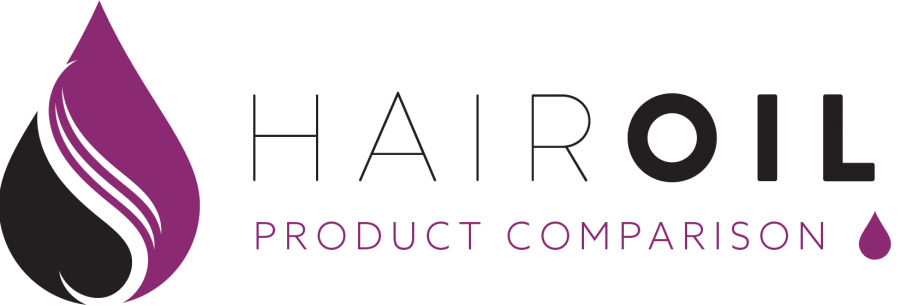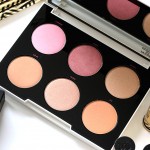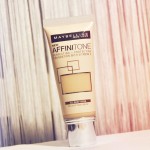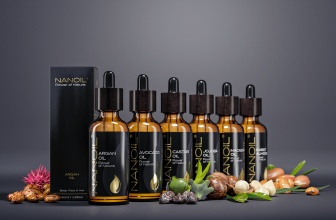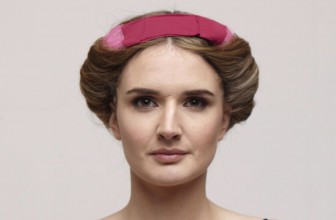
Oil hair treatment is a widespread method aiming at taking care of hair. More and more people declare their willingness to undergo this kind of a treatment whereas the others state that they have already treated the hair with such a healing procedure. And along with the growing popularity of oil hair treatment, arise questions connected with this amazing hair healing procedure. The most common inquiries spreading all over the Internet are connected with the manner of application and type of oil to use.
The article contains brief answers to clear up the most common doubts.
Oil hair treatment. Where to begin with?
The very first step that should be taken before applying oil to hair is determining condition of our hair. This will enable us to choose the right oil for our daily hair care. Once done, it is suggested purchasing an oil and learning the application techniques. Before the first session, it is worth conducting the allergy test first so as to eliminate any adverse reactions your skin might suffer.
What oil will be good for my hair?
The rule is simple. Vegetable oils are rich in poly-saturated fatty acids which are suitable for high porosity hair (damaged hair). For low porosity hair (healthy and glossy) are recommended saturated fatty acids, and mono-saturated fatty acids are perfect for medium porosity hair (slightly damaged or curly hair). All that have to be done is defining porosity level of hair in order to choose the right oil. Certainly, in most cases, an oil’s working can be evaluated at the end of the treatment.
Where to buy a hair oil?
The most popular vegetable oils that can be used for oil hair treatment can be found in a regular shop selling food oils (sunflower oil, olive oil, rapeseed oil, linseed oil, coconut oil, or grape seed oil). Some of the pure oils, like castor or agran oil, can be also purchased at chemist’s. When it comes to drugstores, in most cases, these offer cosmetics based on blends of vegetable oils. However, the unquestionable winner is the Internet where one can find all oils that are produced worldwide. Also, it is advised to browse distributor’s official webpages, visit Internet drugstores or auctions to find the oil one is looking for.
How much of an oil is supposed to be applied to hair?
There are no restrictions connected with the amount of an oil applied on hair yet, in general, there is no need in applying huge amounts of it. Depending on the product’s consistency, a few drops or even two table spoons should suffice (please note, it is advisable not to exceed four table spoons a day). It is important to put on hair such an amount of an oil to let it get absorbed freely so it does not weight hair down. What is more, if applied in great amounts it might become troublesome to remove the natural cosmetic completely once the session of oil hair treatment is over.
Should an oil be applied only to scalp, or should it be applied to hair as well?
Application of an oil depends on the type of a product we are going to use. To demonstrate, it is advised to rub heavy oils or oil mixtures only into scalp, whereas it is better to apply lighter oils to the entire hair length. Although application of oils is pretty the same for each product, it is advised to look at the leaflet or visit the producer’s webpage just to look for the directions for use.
How to perform the procedure of oil hair treatment?
Oil hair treatment is a hair care procedure which can be performed in many ways. Vegetable oils can be put on dry, damp or wet hair. When it comes to the treatment itself, it can be performed before or just after shampooing. Basically, oils can be used as a hairdo finish too. There are plenty of ways of applying oils to hair. Give a try to some of them to find the most convenient for you.
How long should an oil be left on hair?
Natural vegetable oils are considered as completely safe for human organism, therefore there are no limitations connected with time devoted to leaving the product on. As mentioned above, hair can be treated with an oil right before shampooing. However, the longer the oil is kept on hair, the more time all nourishing substances have to penetrate deep into hair structure. Oil can be left on even overnight.
How to determine that oil hair treatment is effective?
Actually, it is plain to see. If your hair becomes visibly smoother, healthier and simply look better than before the treatment, then it is the sign that oil hair treatment works. In general, the outcomes are supposed to be noticeable after a week of regular oil application, however, it all depends on the individual predispositions of hair.
What are the methods of oil hair treatment?
There are three basic methods of oil hair treatment that can be combined at will. For example, you can apply oil to dry hair, in most cases, before shampooing. Naturally, it is also possible to apply oil to blow-dried hair, for example, right after styling, to add shine and facilitate combing. The second method of treating hair with an oil is putting the cosmetic onto wet hair. In this case, hair can be wet right before the treatment (just to put on an oil) as you can apply the cosmetic after shampooing (remember to remove the excess of water first). There is yet another method left, namely, putting hair into a bowl containing a mixture of water and oil. What is more, oils can be also added to other care products. It is also recommended to use natural oils as bases to homemade hair care products (for example, oil hair mists).
What are the most popular hair oils?
Definitely, argan oil, a luxurious substance of regenerative action, is the substance that rules cosmetics’ world. Another popular products are coconut oil and oriental oils from India. Other oils that are also willingly used by many woman are, among others, macadamia oil, almond oil, sunflower oil, grapeseed oil, castor oil, sesame oil and linseed oil. Obviously, this is just a small part of all the oils available.
Can oil hair treatment damage hair?
Absolutely not. Oil hair treatment is a totally natural hair care method. Hair oils are completely safe. The worst case scenario is that they may not produce any effects, if mismatched. Definitely, they will not deteriorate hair condition dramatically even if applied in galore amounts.
What is the effect of applying mismatching oil?
Proper oil matching with hair type is crucial because it determines effectivity of the treatment. Well-selected oil will fulfil its mission, improve hair condition and eliminate all problems connected with strands. On the other hand, mismatching oil can intensify, for example, frizz, make hair dull, weight strands down or impede combing. The good news is, this state is not permanent.
How to determine my hair type?
Hair has different porosity level. The easiest way to learn the type is conducting a test with a glass of water. Obviously, seeing a trichologists (a hair doctor) is more reliable method. Anyway, coming back to the test, pull out one of your hair and throw it to a glass of fresh water. A hair that sinks fast, is damaged and lacks moisture. On the other hand, a hair that remains on water’s surface is healthier and all it needs is to be protected against further damages.
Why coconut oil is not suitable to treat damaged hair?
Most people are wrongly convinced that coconut oil is a remedy for damaged hair problems. On the Internet, there are plenty articles on the moistening and regenerative action of the oil. The truth is, coconut oil does moisture but only indirectly; what it really does is preventing water loss. Because of the great advantage of saturated fatty acids, coconut oil works best for low porosity hair (healthy hair).
Which method of oil hair treatment is the most effective?
All oil hair methods are effective. Certainly, the most intensive action is provided by overnight oil hair treatment. On the other hand, the most even distribution of an oil is guaranteed by putting hair in a bowl filled with the mixture of water and oil.
What is hair porosity?
Hair porosity is a degree at which ‘casing’ protecting each hair is damaged. The external part of hair is built of several overlapping layers made of cuticles. When the cuticles are open widely, this means that the hair porosity is high. In practice, such hair is rough, stiff and poorly-protected.
Which hair porosity would I have?
There are three types of porosity: low, medium and high. Low porosity hair is straight, hard to style, smooth and considered as healthy. High porosity hair is super damaged, dehydrated, split, brittle, dull, rough, stiff and without shine. Medium porosity hair is categorised somewhere in between, yet its condition might be worsened.
What is the connection between oils and hair porosity?
Oils of different fatty acids content match various hair types. To clarify, if one has low porosity hair, they should use only cosmetic butters to obtain the positive outcomes that oil hair treatment can generate. Cosmetic butters have the greatest quantity of saturated fatty acids. When it comes to medium porosity hair, this type of hair benefits from being treated with mono-saturated fatty acids, whereas high porosity hair should be exposed to poly-saturated fatty acids. And this is why determining hair porosity is crucial for oil hair treatment.
What is the cost of hair oils?
It might sound obvious but cost of a hair oil depends on the oil we want to buy. To clarify, oils extracted from common plants, which manufacturing does not occupy much time, are naturally cheaper. On the other hand, exotic oils, such as argan, marula or macadamia, cost more. The world’s most expensive oil is extracted from Damask rose (Rosa x damascena).
How do hair oils work?
Hair oils properties may be surprising. Natural oils, especially those cold-pressed and non-refined, works in a complex way. They moisture, nourish, strengthen, regenerate, deliver gloss, smooth and sort out other problems that touch hair. Among them we can find hair growth stimulating oils as well as oils which are able to eliminate dandruff, limit sebum production, protect hair against high temperature, work as UV filter, and many, many more.
Can hair oils accelerate hair growth?
Indeed, they can. Thanks to regular application of natural oils to scalp and when combined with massaging they can significantly accelerate hair growth as well as activate ‘sleeping’ hair bulbs. Actually, as a consequence of oil hair treatment, baby hair start growing out. The most popular oils of hair growth action are castor oil, amla oil and Hindu brahmi oil.
Can I apply oil hair treatment when being affected by dandruff?
Hair oil treatment is desirable to counteract any scalp problems, including dandruff. If an oil is chosen appropriately (i.e. Siberian pine), it can regulate work of sebaceous glands by limiting excessive sebum production, it can work anti-fungal and anti-bacterial, which as a consequence, considerably contributes to eliminating the problem of dandruff.
Are there any contraindications against oil hair treatment?
The only contraindications are strictly connected with allergy to a particular plant. To clarify, if a person is allergic to nuts, they are not recommended to apply hazelnut or walnut oils. Apart from that, there are no other cases when oils cannot be used. In fact, natural oils are recommended to treat delicate skin of new-borns.
Can a women apply oils while being pregnant?
Yes, pregnant and breastfeeding women can apply natural oils. To tell more, it is even suggested replacing regular cosmetics containing artificial preservatives and substances with natural oils. Some of natural oils can also counteract stretch marks and skin discolorations.
Is it true that oil accelerates hair drying?
Oils can speed up drying-time of hair because fats do not inosculate with water. When an oil is absorbed into hair, it pushes out water cumulated on strands. This is the very reason why hair treated with oil dries faster and the heat produced by a blow-dryer improves absorption of oil. In this way one can shorten time devoted to hair drying even up to 50%.
Why hair oils are better than regular conditioners?
Effective replacements of hair conditioners, mask and balms are natural oils. They do not only work superficially but also are able to regenerate and strengthen hair form the inside. What is more, their action is more intensive and thanks to regular use, oils can permanently improve hair condition. Apart from that, natural oils are much safer and match hair structure better.
Does oils contain silicones, parabens and alcohols?
If we are talking about pure, natural oils, then no, they do not contain any of the above-mentioned. Natural oils are cosmetics completely free from harmful substances. Instead, they contain plenty of vitamins, minerals, fatty acids, phytosterols, and sometimes even squalene as well as other pro-healthy substances. Silicones, parabens or alcohols can be present in oil blends produced by various cosmetic brands, therefore it is worth checking list of ingredients before buying a particular hair product.
Can hair oil balance pH level of skin?
Majority of natural hair oils are similar in composition to human skin built. For that very reason they are perfect at penetrating hair as they can rebuilt natural hydro-lipid barrier of skin, regulate level of sebum production as well as positively influence pH level of our skin.
